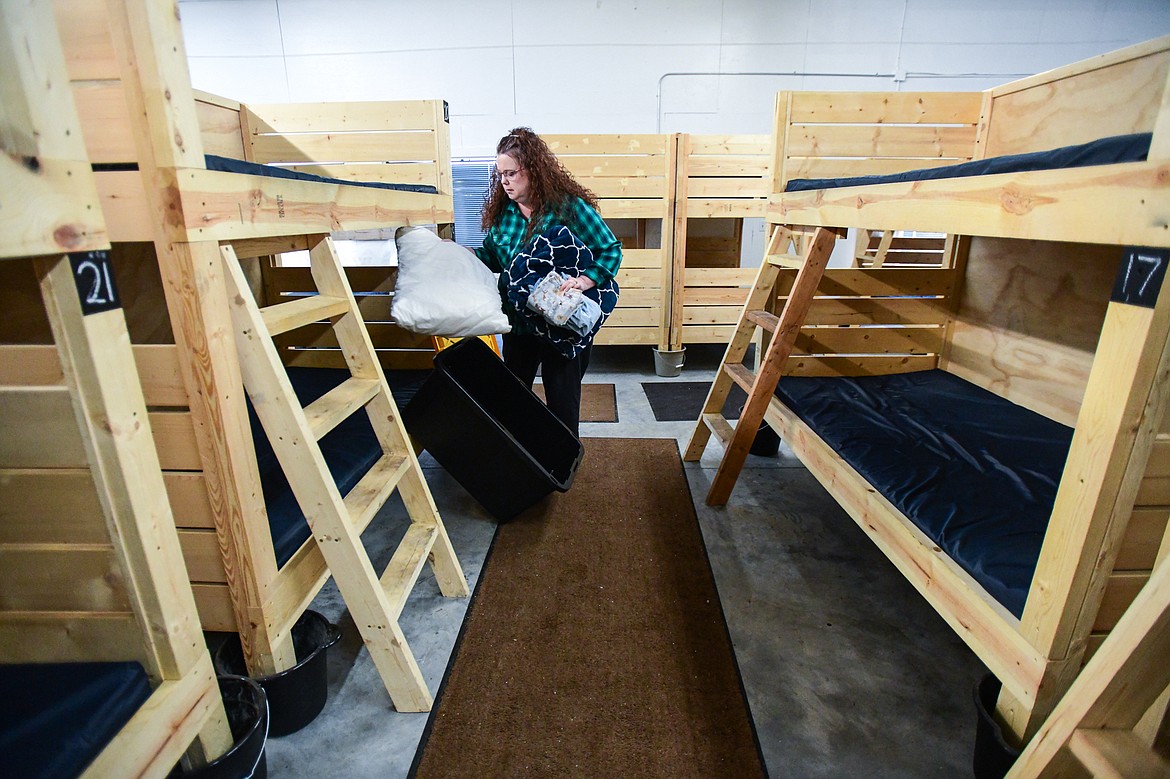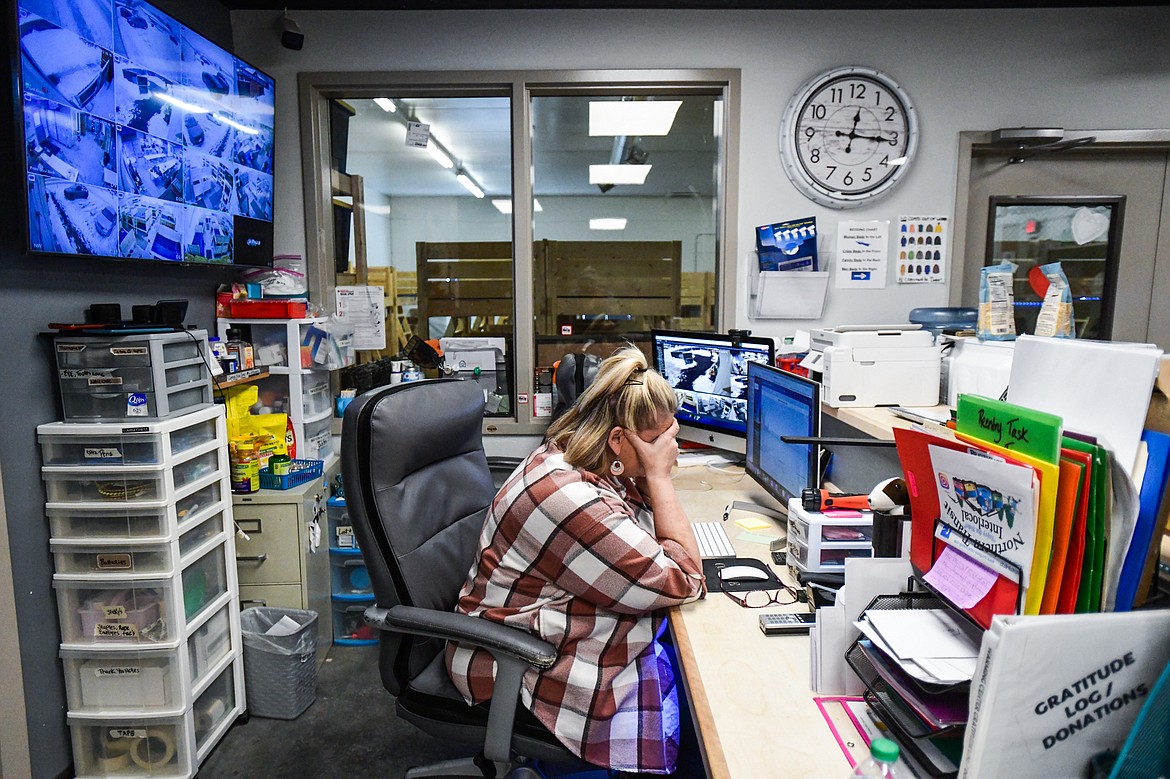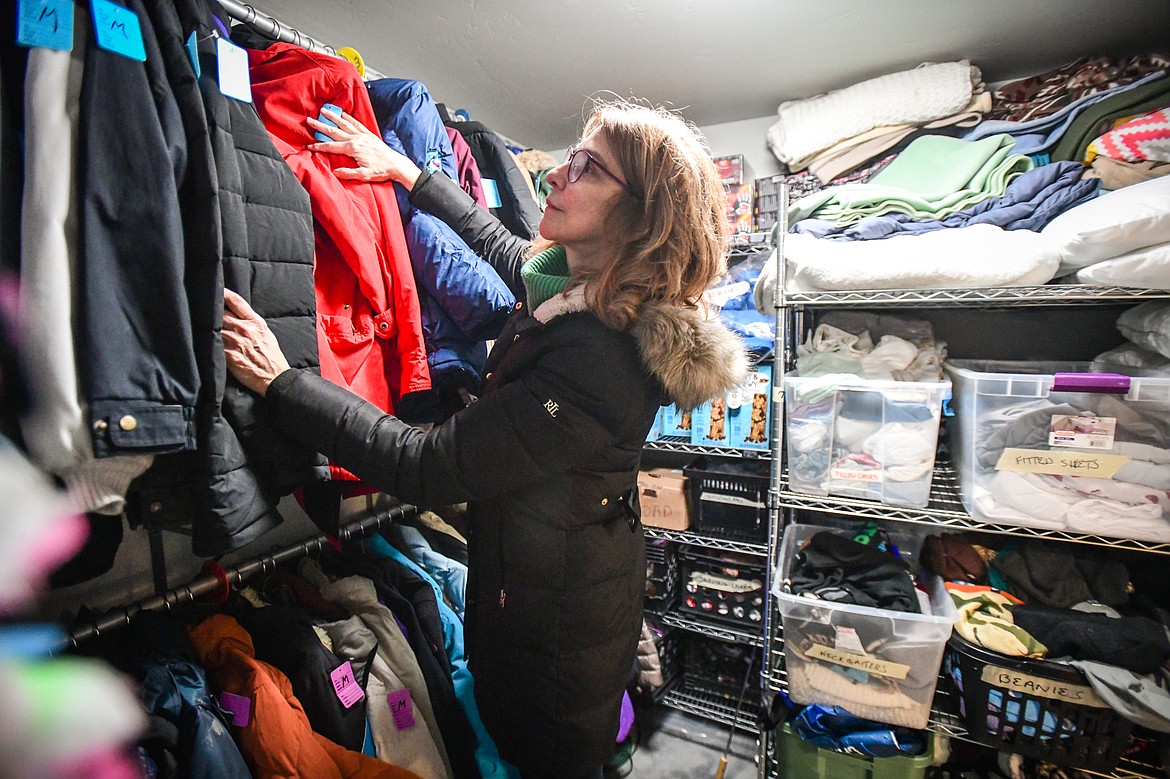The true cost of homelessness
As local governments and residents grapple with the Flathead Valley’s rise in homelessness, discussions about the public and private costs of addressing the problem have come into the forefront.
Following the Flathead County commissioners’ Jan. 19 letter on homelessness, and as part of the public debate on how to address growing homelessness, elected officials and members of the public have raised concerns about the expenses incurred by trying to aid homeless people.
Commissioner Randy Brodehl, for example, advised residents to stop aiding homeless people "who are only takers and have no intention of being citizens here," and described aid as an “abuse of taxpayer dollars.”
Multiple commenters at a Jan. 23 Kalispell City Council work session dedicated to enacting restrictions on local parks as a result of the homeless presence there also said they felt that the issue was not deserving of public funding.
Homeless experts argue, though, that the public is already paying for certain services — and that those funds would be better spent on supportive housing programs that would get people off the streets and save taxpayer dollars.
So what are the actual numbers?
Studies have identified medical expenses and the costs of law enforcement intervention as the main costs associated with homelessness. Experts say that the majority of those expenses can be attributed to a small portion of the homeless population, occasionally referred to as “frequent users.”
Homelessness experts also point to cost savings that can come with permanent supportive housing programs — as well as other community benefits. Those include more intangible benefits, such as social and ecological improvements where such programs have been implemented.
EMERGENCY DEPARTMENT bills make up the majority of the services costs for frequent users, according to a 2020 study done by the Community Action Partnership of Northwest Montana.
As part of their assessment, the partnership gave a sample expense tracker for a 67-year-old homeless man in Kalispell. Although his example is an outlier among the homeless population as a whole, the costs are average among the chronically homeless who require additional health and social services other than housing, said Cassidy Kipp, the organization’s deputy director.
According to the group’s accounting, the man’s services cost a total of $66,628, with nearly $58,000 – or 87% — falling under inpatient and emergency care. The man made 57 emergency department visits that year, at an expense estimated by Logan Health at $1,016 per visit.
“Logan Health will always see patients who seek help at one of our emergency facilities,” said Chris Leopold, a spokesperson for the hospital group.
He said that the hospital’s patient advocates try to get homeless and other patients covered by state and federal programs.
Homeless people use emergency department treatment more than average because they are more likely to have chronic conditions and less likely to possess insurance or established primary or specialty care physicians.
From 2015–2018, there were annual averages of 42 emergency room visits per 100 total population and 203 visits per 100 homeless persons nationwide. In western states like Montana, visit rates among homeless people were even higher, at 268 visits per 100 people, according to a report by the Centers for Disease Control and Prevention.
To get to the hospital, some homeless people in Kalispell are brought by police or by a fire department’s ambulance services. Ambulance rides are typically partially reimbursed by Medicaid or the costs are taken on by the fire department, according to Kalispell Fire Chief Dan Pearce.
Non-emergency ambulance rides cost a base rate of $1,139.34, plus $26.51 per mile and the costs of supplies used in transit, according to a table provided by Pearce. Medicaid covers $142.15 of the base rate, and $4.01 per mile, for those covered by the program.
Anecdotally, Pearce shared that his department sees a few frequent users, with one uninsured and unhoused individual requesting an ambulance “75 times in the last three months.”
“We received partial payment for five of those transports,” Pearce said.
Hospitals in other parts of the country have experimented with programs designed to reduce costs and improve health outcomes for frequent users.
In Chicago, a pilot program launched by the University of Illinois Hospital paid the rent for 26 homeless frequent users. The hospital paid for housing, estimated at $1,000 per month, but felt it was worthwhile because patients’ expenses amounted to more than $3,000 per night when they stayed in the emergency room, according to a report by NPR.
Supporters of the program point to several benefits: a reduction in homelessness, improvements in patient health outcomes and a 50% reduction in emergency room visits, representing large cost savings for the hospital.
Kalispell Police Chief Doug Overman has said that more frequent trespassing and other service calls have led to an increase in department expenditures related to the homeless population, but since they do not collect housing information for most calls, the figure is impossible to calculate exactly.
Trespass calls, welfare checks and other police interactions with the city’s homeless population have been “using an increasing amount of officer time,” according to Overman, who said that an hour of police officer time costs a minimum of $45 to the city.
Jail time was cited as $89 per day, according to Flathead County Sheriff Brian Heino, although data was not immediately available on the number of total nights spent in the facility by local members of the homeless population.
Clean-up of public parks and the county fairgrounds was also raised as a public expense at the Kalispell City Council’s Jan. 23 meeting, and fairground manager Sam Nunnally estimated that his staff have spent 40 hours over the past several months cleaning up waste and personal belongings found in horse stalls. Nunnally said that a recent clean up effort cost around $1,000.
WHEN IT comes to funding programs that experts believe would alleviate or end homelessness altogether, the costs can vary based on the services provided.
The Community Action Partnership of Northwest Montana’s federally-funded supportive housing subsidy programs for people with a disabling condition can cost on average between $3,600 and $5,000 per person annually — with participants expected to use a third of their own income towards housing costs, according to Kipp.
The rapid rehousing program, aimed at people who are experiencing homelessness but do not require additional services, cost on average $1,372 — enough to cover a housing deposit and possibly a month’s rent — though the benefit is calculated using a graduated subsidy model designed to increase self-sufficiency, said Kipp.
“Ultimately what we want is to get people on their feet,” said Kipp, pointing out that those programs are meant to help people get into housing that they can afford without assistance.
Permanent supportive housing programs — aimed at chronically homeless people who may require behavioral health and substance abuse disorder treatment — can actually end up saving taxpayers compared to frequent use of emergency services, according to a report by the Corporation for Supportive Housing.
“Our findings indicate creating a Supportive Housing Services Benefit in Montana for 187 Montana Medicaid beneficiaries who are experiencing homelessness (chronic and short-term) and in the top cost decile of Medicaid expenditures could result in a total of $445,766 net annual Medicaid cost avoidance, after reimbursing supportive housing providers for supportive housing services,” the report reads.
The report tracked Medicaid claims among the top 10% of homeless frequent users, and found that supportive housing would result in a 45% reduction in Medicaid costs, or over $2,000 per person, per month, and only cost Medicaid about $500 per month.
The organization also looked at supportive housing built in Denver, and found that among those who received supportive housing, 86% remained in their homes in the first year, and after three years, 77% remained housed. The report also states that participants had a 34% reduction in police interactions, 40% reduction in arrests, and spent 38 fewer days in jail compared to the control group which did not receive supportive housing.
The Denver program was funded by private investment, using a “pay for success” model that links investment in social services with improved outcomes. The city agreed to pay investors back if participants met certain housing goals, and the investors received their total investment of $8.6 million, plus another $1 million in returns, according to the report.
The model shows promise, said Corporation for Supportive Housing Mountain West Director Annie Bacci, although it does require a certain scale for viability.
Bacci also pointed to the Trinity subdivision in Missoula, and the Housing First Village in Bozeman as regional examples of local governments providing supportive housing.
The Trinity complex created 30 units of supportive housing financed using both low income housing tax credits and local funding, said Bacci, and Bozeman created a “tiny house” village that is paired with social services.
Reporter Adrian Knowler can be reached at 758-4407 or aknowler@dailyinterlake.com.
This story has been updated to clarify a quote from Commissioner Randy Brodehl.






